
Lot 49
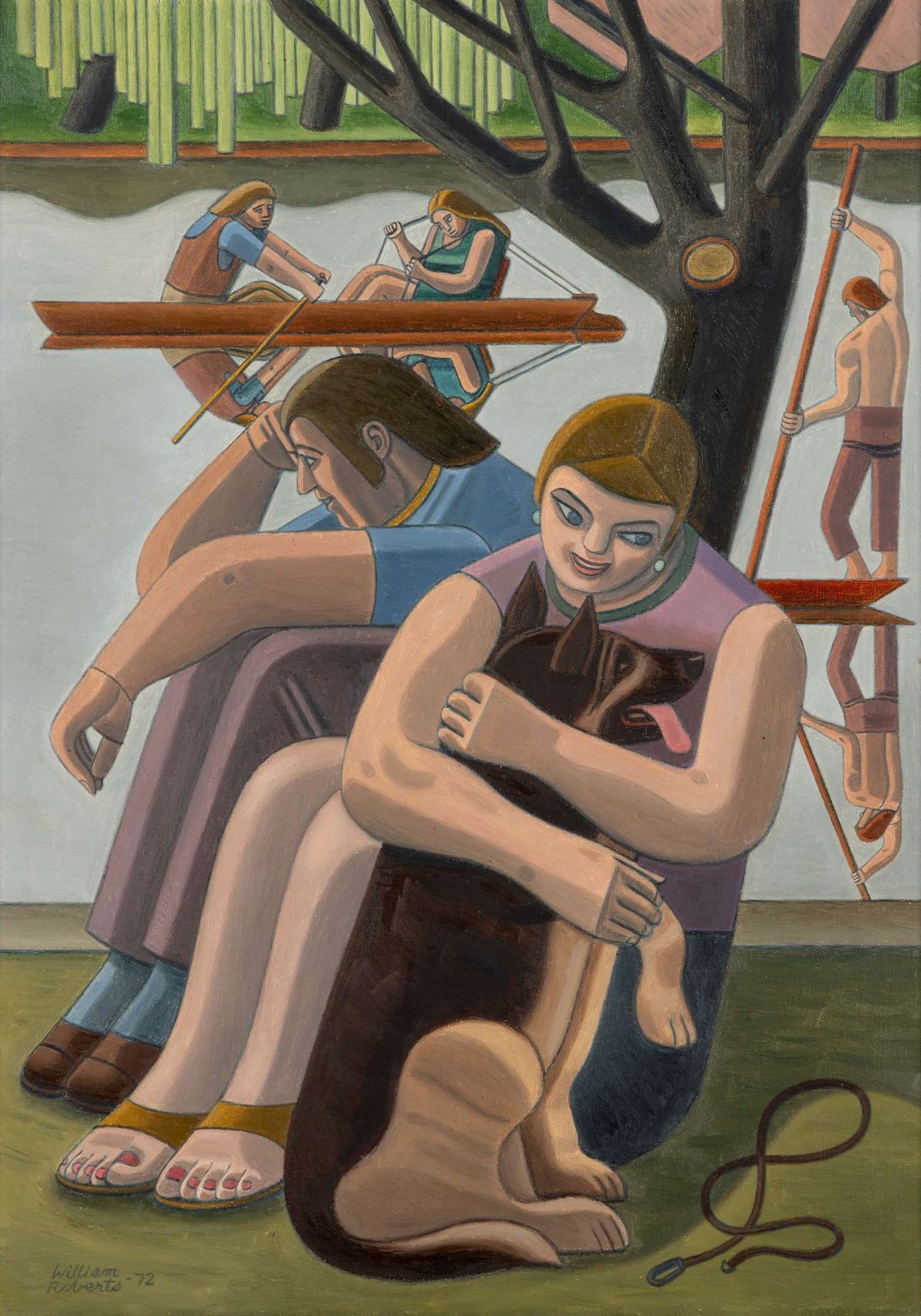
WILLIAM ROBERTS R.A. (BRITISH 1895-1980) §
ENNUI, 1972
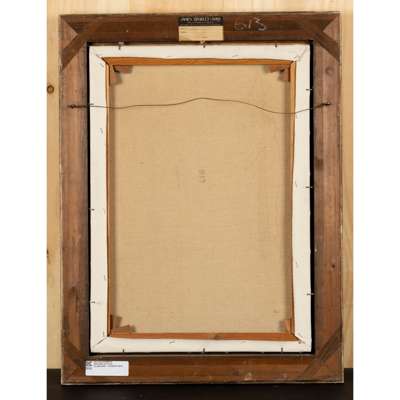
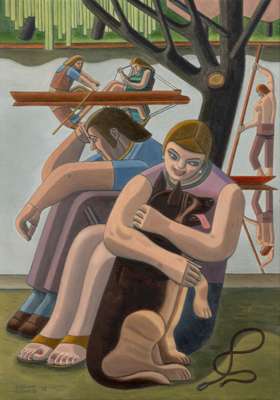
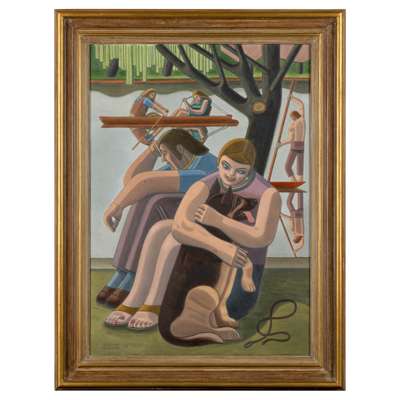



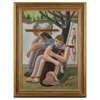
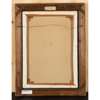
Auction: MODERN MADE Part I | 31 October 2024 | Lots 41 to 79
Description
oil on canvas
Dimensions
70.5cm x 50.5cm (27 ¾in x 19 7/8in)
Provenance
Sarah Roberts, the Artist's wife, from whom acquired by the parents of the present owner, c.1980s.
Footnote
Exhibited:
Royal Academy of Arts, London, 1973;
Pallant House Gallery, Chichester, England at Play, 20 January - 20 March 2007.
Literature:
Roberts, William, Paintings and Drawings by William Roberts R.A., Royal Academy, London, 1976, pl. 34.
Ennui of 1972 by William Roberts reveals the confident and monumental treatment of a scene of outdoor leisure, full of human activity and infused with humour, which characterised his work of the decade. Its focal point is the bond between a dog and its owner, caught in a mid-walk moment of relaxation and happiness.
Following the launch of the touring retrospective exhibition of Roberts’ work at the Tate Gallery in London in 1965 and the refusal of an OBE in the same year, Roberts was elevated to the rank of Senior Royal Academician at the Royal Academy of Arts in 1970. Further professional recognition and the growth of his standing within the art world was to follow in the form of multiple solo exhibitions in the public and private sectors, his publication of books including Memories of the War to End War 1914-18 of 1975 and Paintings and Drawings by William Roberts R A in 1976 and the acquisition of his work for various public collections, including those of the Tate (Skipping (The Gutter), Playground (The Gutter) and Esther Lahr), the National Galleries of Scotland (Sarah), Glasgow Life (The Dancers) and the British Council (Howitzer in Action).
As Simon Martin explained when curating the exhibition William Roberts: England at Play of 2007, in which Ennui was shown:
“Roberts drew and painted the everyday life of the English people. Visiting local cafés, cinemas, parks, pubs, the races and occasionally the seaside, he captured the leisure activities of his fellow Londoners and portrayed the eccentricities and social interactions of those around him with respect, dignified humour and unerring affection.” (Simon Martin, ‘William Roberts: England at Play’, Pallant House Gallery Magazine, no.10, January – March 2007, p.15)
Ennui may well depict a scene beside Regent’s Canal in London, which the artist could access from his garden and on which he and his family enjoyed rowing. Scenes observed during regular walks around Camden Town and Regent’s Park were worked up from quick sketches to squared and precise drawings to finished paintings in the studio. As the current work demonstrates, detail was kept to a minimum, form was simplified and the human figure was rendered with a tubular solidity which has been related to the approach of Cubist Masters including Pablo Picasso, Georges Braque and Fernand Léger (see Simon Martin, op.cit., p.16).
A multi-layered narrative plays out before the viewer’s eye, from the affection between dog and woman in the foreground, the apparent boredom of the man beside her, as referred to in the work’s title, to the angularity of the rowers and punters reflected in the still water; each person appears to be in a world of their own. A strong sense of the horizontal and the vertical provides structure to the composition, which recedes through several spatial planes to reach the far bank.
It can be argued that Ennui is a somewhat wry response to the series of paintings of the same title by Walter Sickert (1860-1942), whom Roberts teasingly portrayed in He Knew Degas of 1938 (Private Collection). Created during the period from 1914 to 1918, the first of the quartet is in the Tate and the last at the Ashmolean Museum, Oxford, whilst their subject is the petering out of the relationship between a husband and wife. Roberts himself had a particularly close marriage, to Sarah Kramer (1900-92), sister of the artist Jacob Kramer (1892-1962), following their wedding in 1922. Roberts’ pride in his own Ennui is shown by the decision to exhibit it at the Royal Academy in 1973, the year after its completion.







